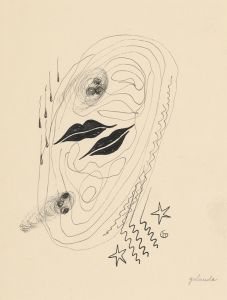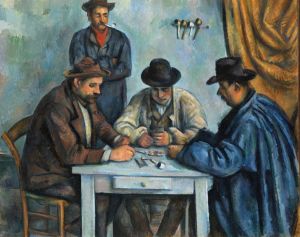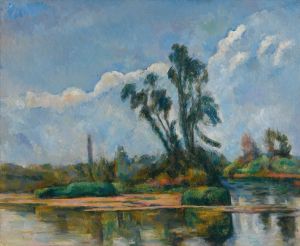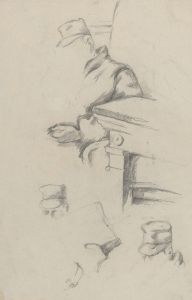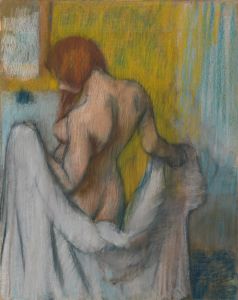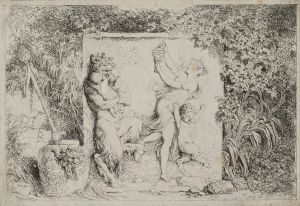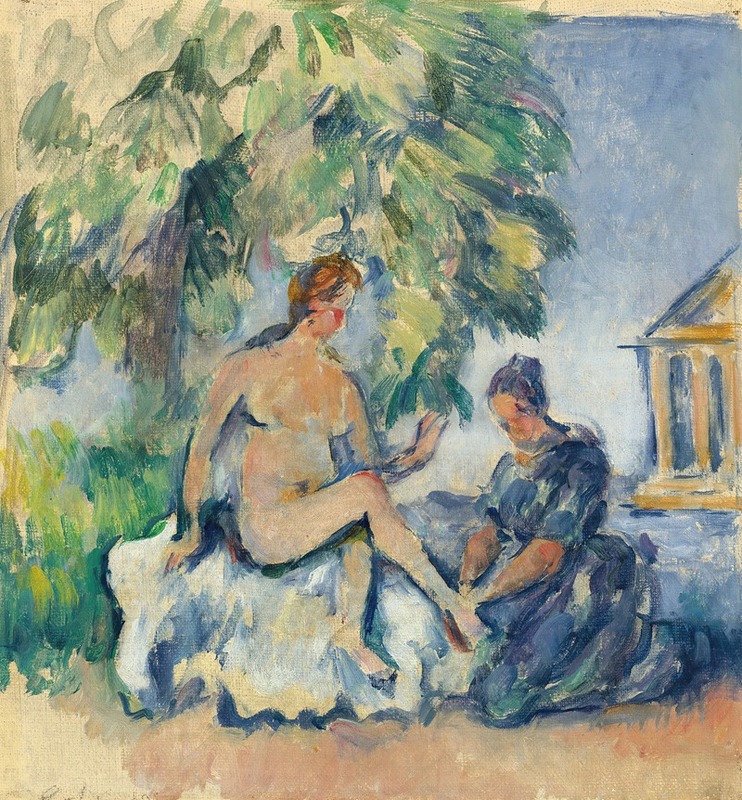
Bethsabée
A hand-painted replica of Paul Cézanne’s masterpiece Bethsabée, meticulously crafted by professional artists to capture the true essence of the original. Each piece is created with museum-quality canvas and rare mineral pigments, carefully painted by experienced artists with delicate brushstrokes and rich, layered colors to perfectly recreate the texture of the original artwork. Unlike machine-printed reproductions, this hand-painted version brings the painting to life, infused with the artist’s emotions and skill in every stroke. Whether for personal collection or home decoration, it instantly elevates the artistic atmosphere of any space.
Paul Cézanne's painting "Bethsabée," also known as "Bathers," is a notable work by the French Post-Impressionist artist, created around 1875. Cézanne is renowned for his unique approach to form and color, which laid the groundwork for the transition from 19th-century Impressionism to 20th-century Cubism. His work often focused on still lifes, landscapes, and figures, with "Bethsabée" being an example of his exploration of the human form.
"Bethsabée" depicts the biblical story of Bathsheba, a subject that has been a popular theme in art history. Bathsheba was the wife of Uriah the Hittite and later became one of King David's wives. The narrative is often associated with themes of voyeurism, power, and seduction, as King David first saw Bathsheba bathing and was captivated by her beauty. This story has been interpreted by many artists over the centuries, including Rembrandt and Rubens, each bringing their own perspective to the scene.
Cézanne's interpretation of Bathsheba is distinct in its abstraction and emphasis on form rather than narrative detail. Unlike the more dramatic and detailed renditions by earlier artists, Cézanne's "Bethsabée" is characterized by its simplified forms and muted color palette. The painting reflects Cézanne's interest in the structural aspects of painting, focusing on the arrangement of shapes and the interplay of light and shadow.
The composition of "Bethsabée" is notable for its use of geometric shapes and the way Cézanne constructs the figure and surrounding environment. The painting demonstrates his technique of building up the surface with layers of paint, creating a sense of depth and solidity. This method was part of Cézanne's broader effort to capture the complexity of human perception and to depict the underlying structure of the natural world.
Cézanne's work, including "Bethsabée," was not widely appreciated during his lifetime. His approach was often misunderstood by critics who were accustomed to the more polished and detailed works of his contemporaries. However, Cézanne's influence grew significantly after his death in 1906, as artists and critics began to recognize his role in shaping modern art. His exploration of form and color inspired many 20th-century artists, including Pablo Picasso and Henri Matisse, who regarded him as a pivotal figure in the development of modern art.
Today, "Bethsabée" is appreciated for its innovative approach and is considered an important example of Cézanne's contribution to the evolution of art. The painting is housed in the Musée d'Orsay in Paris, where it is part of a collection that showcases the transition from traditional to modern art. Cézanne's work continues to be studied and admired for its profound impact on the art world, and "Bethsabée" remains a testament to his enduring legacy.







